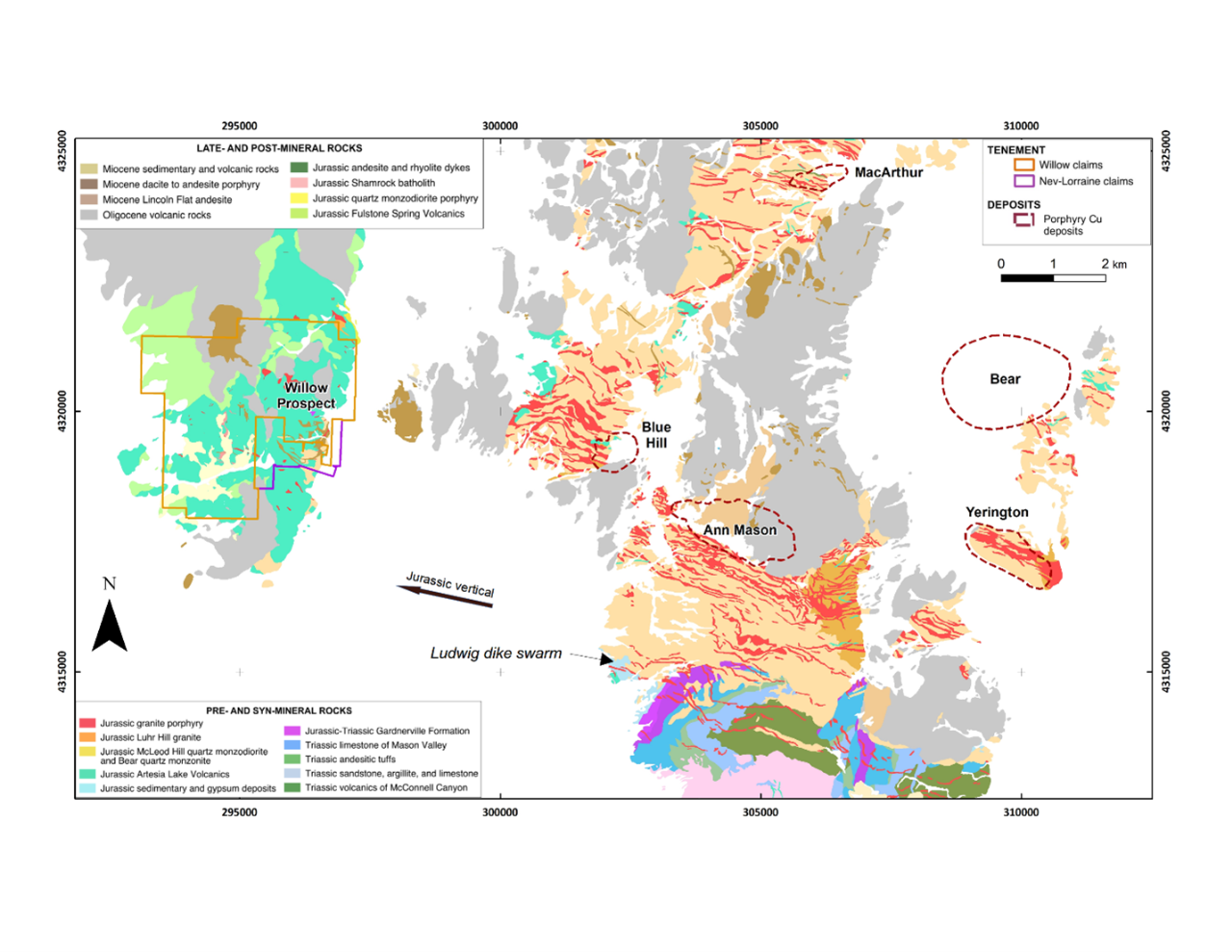Projects
Willow Copper-Molybdenum Porphyry
Yerington, Nevada
Geology of Willow
The Yerington copper porphyries occur within the former site of a Jurassic-aged subduction-related magmatic arc that marks what was once the western margin of North America. This volcanic arc was created as oceanic crust was forced under the North American plate causing it to melt, leading to the creation of extrusive and intrusive volcanic rocks.
The subduction process led to the creation of a large quartz monzonite batholith dated at 169 Ma (Ma = million years old) that was emplaced into the arc, cut by slightly later granites dated at 168 Ma. The batholith was originally directly overlain by a 2-3 km vertical series of cogenetic volcanic flows and interbedded volcaniclastics.
The four known porphyry copper deposits (Yerington, Ann Mason, Bear and MacArthur) share a common relationship with granite porphyry dyke swarms sourced from cupolas of the 168 Ma Luhr Hill porphyritic granite (these are in red on the figure below, with the dykes projected to surface). A fifth porphyry deposit related to the Ludwig porphyritic granite dyke swarm along the southern edge of the batholith has long been hypothesized, and that is the target on Willow. Initial drilling by Abacus suggest that a sizeable portion of the hypothesized porphyry center could be preserved at Willow, west of the known porphyry deposits.
Geology from Proffett and Dilles (1984), Proffett (2007), and Abacus mapping. Resource outlines from Kulla et al. (2017) and https://Lion Cu and Au
The porphyry copper deposits are found both along the contact with the batholith, and above within the overlying volcanic rocks, in both cases associated with dyke swarms. The hydrothermal activity that formed the copper deposits altered a large volume of the surrounding rock above the batholith, allowing vectoring into a porphyry center.Much later, after all volcanic activity ceased, and after considerable erosion, extensional tectonics pulled the rocks apart from 14.0-12.5 Ma to produce the basin and range topography characteristic of the area today. This process caused major faulting with the whole area tilting 60-90° to the west, including the porphyry copper deposits, with everything now lying on its side. The net effect in the Yerington district is to create an exposed cross section through a porphyry district, with the roots in the east and the tops to the west.

 Ajax, BC
Ajax, BC
